 | ||
| Your browser is not supported. | ||
|
Please browse our site using any of the following options:
| ||
Choosing Tools, Findings & Beads for Jewellery
Get the tools and supplies to make jewellery and other beaded creations.
Tools
The beader's tool kit is not as complicated as it might appear. With a few staple items you can be all set to make almost anything.
Flush Cutters
Also known as wire cutters, this tool is used for cutting most of the materials you will use in beading. They are called flush cutters because one side of the cutting edge is flat, and the other is bevilled. This creates a flat cut that is perpendicular to the end of the wire, ensuring there are no pointy, angled ends that scratch while making and wearing beaded crafts.
Flat Nose Pliers
Flat nose pliers are very versatile, and can be used for:
- bending and manipulating wire, head pins and eye pins
- gripping objects while you work with them
- opening and closing jump rings
It's handy to have two pairs of flat nose pliers, so that you have one for holding an item, and one for manipulating it.
Chain Nose Pliers
Chain nose pliers serve much the same purpose as flat nose pliers, but their tapered ends make them better at getting into smaller, tighter places, so they are particularly useful for small and intricate work.
As with flat nose pliers, it's ideal to have more than one pair so that you can use one to hold an item, and the other to manipulate it.
Crimping Pliers
Also known as crimping tools, these are used to apply crimping beads to wire. The beads are flattened and then bent by the pliers to hold joins and ends in place.
Crimping pliers come in three sizes: micro, standard, and maxi. Beginners should find a standard pair a good place to start.
Round Nose Pliers
Round nose pliers have two conical ends. These are used for bending, coiling and looping wire. The ends are tapered so that it is easy to make loops in a range of sizes.
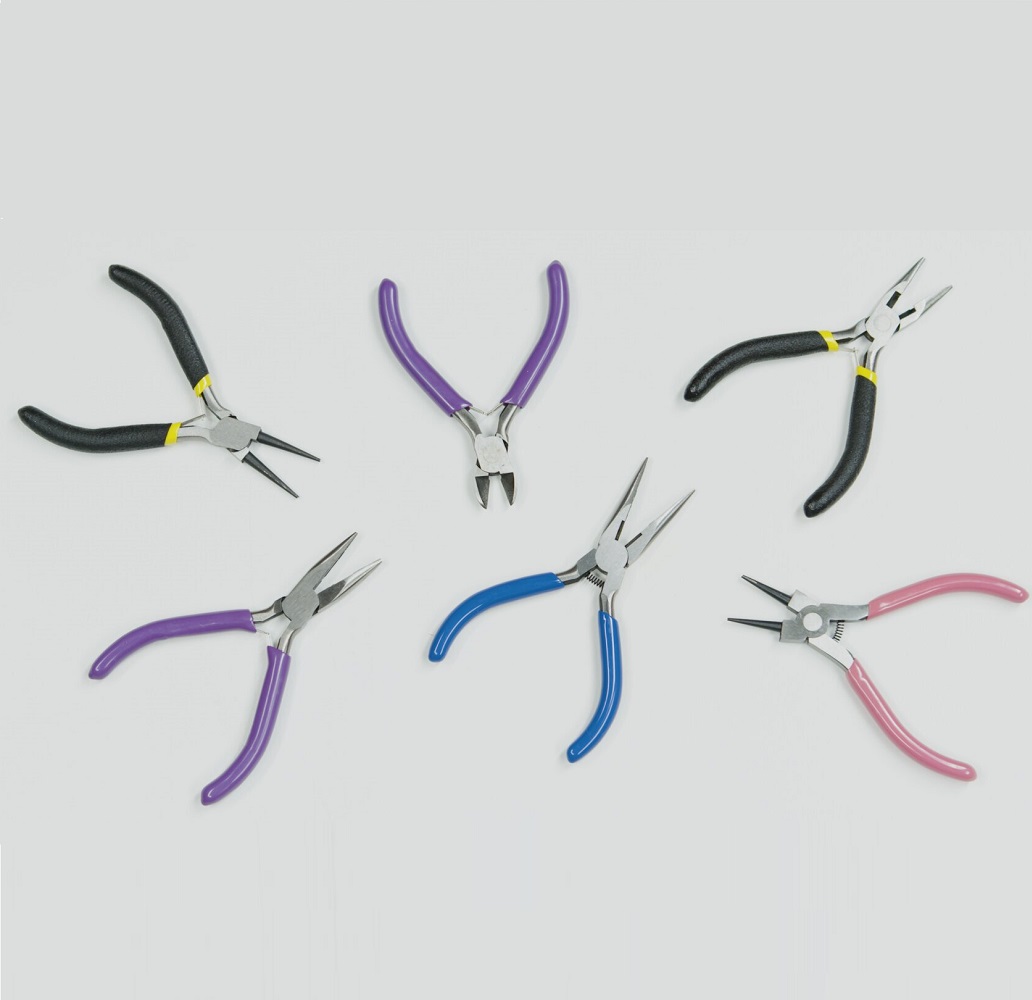
Beads
There is an almost limitless variety of beads to be found and made, and the more you look into these incredible creative materials, the more you will discover. For beginners, there are some useful distinctions that can help make sense of what's out there.
Type
Beads can be roughly divided into four main types based on use.
- Seed beads
- Small beads which range in size. They have an 'aught' number, which becomes larger as the beads get smaller:
Aught | Diameter (mm) |
1 degrees celsius | 6.5 |
2 degrees celsius | 6.0 |
3 degrees celsius | 5.5 |
4 degrees celsius | 5.0 |
5 degrees celsius | 4.5 |
6 degrees celsius | 4.0 - 4.3 |
7 degrees celsius | 3.4 - 4.0 |
8 degrees celsius | 2.5 - 3.1 |
9 degrees celsius | 2.2 - 2.7 |
10 degrees celsius | 2.0 - 2.3 |
11 degrees celsius | 1.8 - 2.1 |
12 degrees celsius | 1.7 - 1.9 |
13 degrees celsius | 1.5 - 1.7 |
14 degrees celsius | 1.4 - 1.6 |
15 degrees celsius | 1.30 - 1.40 |
16degrees celsius | 1.25 - 1.35 |
17 degrees celsius | 1.2 |
18 degrees celsius | 1.15 - 1.20 |
20 degrees celsius | 1.0 - 1.17 |
22 degrees celsius | 1.02 |
24 degrees celsius | 0.91 |
- Used widely across all jewellery and bead craft.
- Also used as accents in dressmaking, embroidery, fibre arts, and other crafts.
- Usually made of glass, ceramic, metal, or plastic.
- Common seed bead shapes include:
- Spacer beads
- Simple beads that are threaded between focal beads to space them out.
- Often made of less expensive materials to balance the cost of focal beads.
- Usually plainer than other beads, playing a supporting role in beaded designs.
- Focal beads
- Larger or more ornate beads, designed to stand out.
- Focal beads can be made of almost any material, and come in all shapes and sizes.
- Cabochons
Material
What a bead is made of will determine:
- It's cost
- How heavy it is
- Aesthetic qualities such as its colour and texture
Beads can be made of almost anything including:
- Manufactured materials such as plastic, resin, and glass.
- Natural materials such as bone, shell, stone, gems, and wood.
You can also make your own beads from craft materials such as clay and paper, and even turn precious objects into beads by drilling holes in them, setting them in resin, or wrapping them in wire.
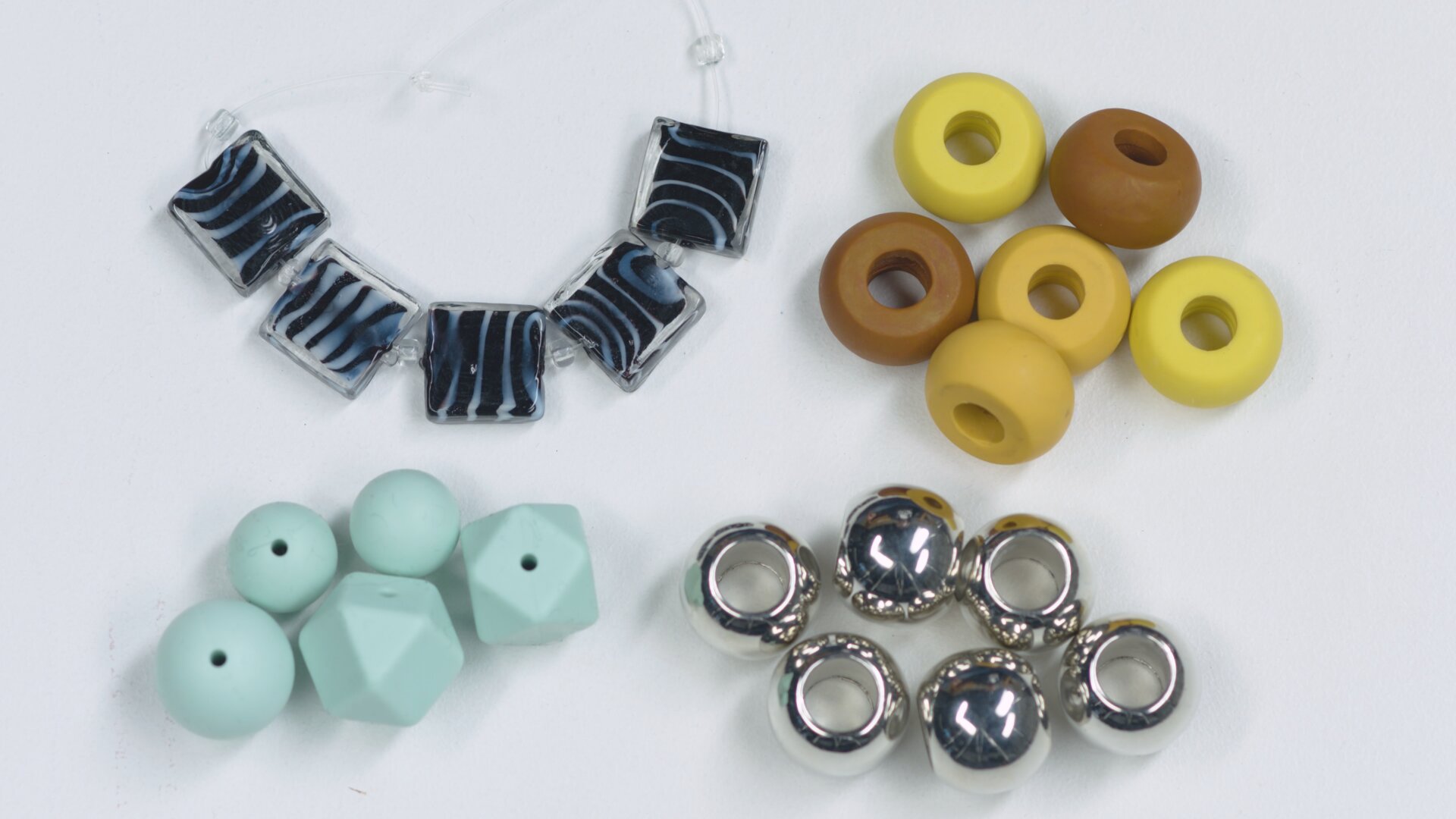
Stringing Materials
Almost all beading projects require something to string beads onto. Choosing an appropriate stringing material will ensure that your creation looks just right, and lasts as long as possible.
The interactions between beads and stringing materials will be different with every combination, so there are no hard and fast rules on exactly what to use each time. However, when making your choice, consider the material's size, strength, and flexibility, and how it will influence your design.
For example:
- It's important to choose a wire size that will fit through your beads.
- When creating an item that is going to be worn often, choose a strong material that will not break easily.
- If you want to create a piece with movement, choose a flexible stringing material.
Cabled Beading Wire
A strong material widely used in all forms of beading, cabled beading wire is made of multiple strands of stainless steel wire, wrapped in a nylon coating.
- The strength and flexibility of a particular beading wire is determined by how many strands it is composed of. The larger the number of strands, the more flexible it will be.
- It's nylon coating makes beading wire resistant to fraying, even when used with beads that have rough or sharp surfaces.
- This wire cannot be knotted so it is best secured with crimping beads.
- While it is most commonly found in silver, cabled beading wire comes in a variety of colours to suit different projects.
Shaping Wire
Unlike cabled beading wire, shaping wire is simply a single strand of malleable metal wire.
- These wires can be made from many metals including silver, gold, copper, and stainless steel.
- A versatile material that can be used for threading, wrapping, shaping, and even crochet.
- Shaping wire comes in three hardness categories: dead soft, half hard, and full hard. As a rule, strength and hardness increase as pliability decreases.
- Best cut with flush cutters and manipulated with flat nose, round nose, and chain nose pliers.
- There is a standardised gauge for shaping wire:
Gauge | Diameter (mm) |
16 | 1.29mm |
18 | 1.02mm |
20 | 0.81mm |
22 | 0.64mm |
24 | 0.51mm |
26 | 0.41mm |
28 - 34 | 0.32 - 0.16mm |
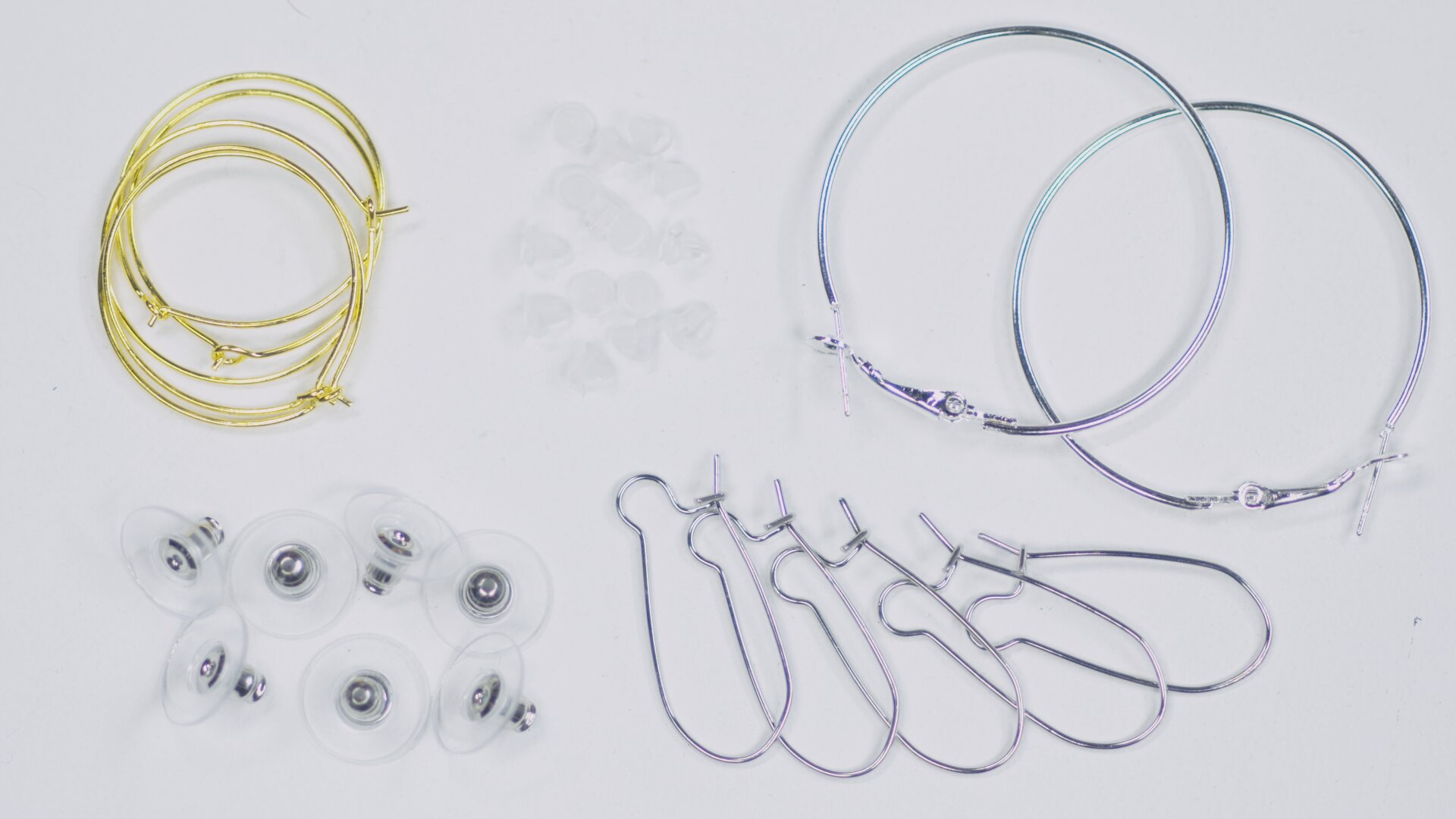
Beading Thread
Nylon or polyethylene thread mostly used for bead weaving, or for sewing beads onto other materials.
- The size gauge for these threads is alphabetical, with A being the smallest.
- It is generally best to work with a needle when using these threads.
- While they are not as strong as beading wire they are even more flexible so they produce a nicer drape when used in jewellery making.
Monofilament
Also known as invisible cord, this is a transparent nylon thread that can be used when you don't want your stringing material to be seen.
Elastic Cord
A stretchy stringing material ideal for making necklaces and bracelets.
- Cuts and knots easily, so jewellery can be made without tools and findings.
- Bracelets and necklaces made from this stretchy material can be pulled on and off without the need for clasps.
Other Stringing Materials
There is so much room for creativity when looking for stringing materials. For unusual textures and interesting effects try:
- Ribbon
- Leather or suede
- Chain
- Silk
- Cord
- Twine
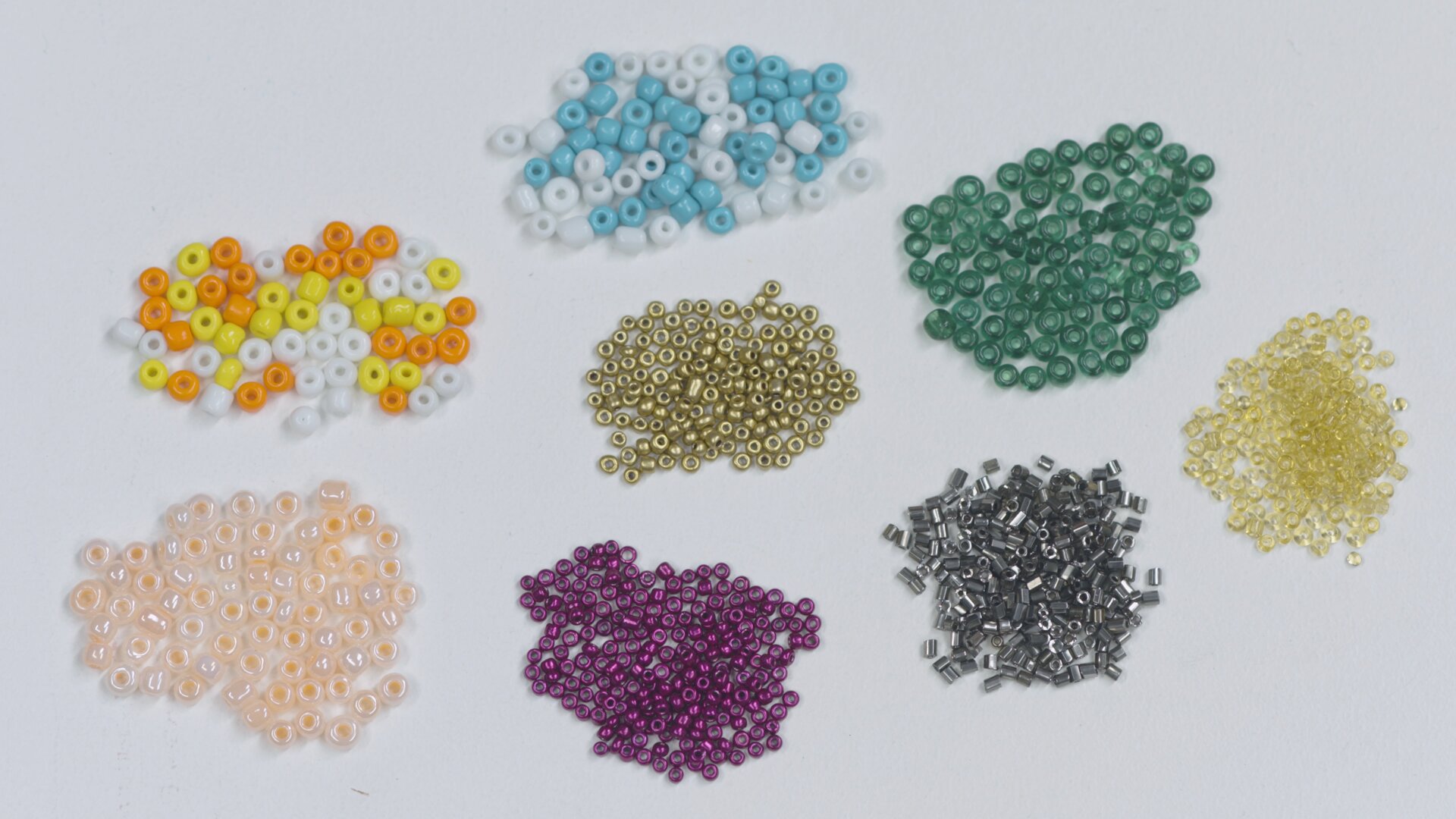
Findings
Findings are all the components used for clasping, holding, spacing, joining, and finishing. They create the structure for beaded creations, and can also be decorative in their own right.
NAME | DESCRIPTION & USE |
Bail | Bails create loops on a pendant or other hanging item so that it can be threaded onto a necklace or chain. |
Bead caps | These sit on top of beads to add interest and detail. They can also protect beads from friction damage. |
Bead cones | Cone shaped findings that are used to secure and cover multiple strands of beading. |
Bead tips | Clam shaped beads made of soft metal, bead tips are used to cover knots or crushed crimp beads. Some have loops for attaching clasps and jump rings. |
Clasp, barrel (or torpedo) | A barrel shaped clasp usually secured with a screw mechanism. Some barrel clasps have a magnetic closure. |
Clasp, fish hook | A clasp with a hook that fits into the main body of the clasp. They usually lock in place, and released by squeezing the sides of the hook together. |
Clasp, hook and eye | A simple clasp that is secured by placing the hook through the eye. |
Clasp, lobster (or parrot) | A clasp with a spring closure that is operated by a trigger on the outer side of the clasp. |
Clasp, spring ring | A circular clasp with a section that can be withdrawn using a spring mechanism, then closes when released. |
Clasp, toggle | Toggle clasps are comprised of a ring and a bar. The bar must be wider than the ring, so that when it is pivoted and placed through, it will be caught by the ring when it draws back. |
Cord ends | These findings are open at one end, and have a loop at the other. They are placed over the end of the stringing material to finish it neatly, and provide for the addition of jump rings and clasps. Some can be squeezed shut with pliers, while others require glue to hold them in place. |
Crimp beads | Small rounds or tubes of soft metal that are used to secure loops on wire or other stringing material. Once in place, they are secured with crimping pliers. |
Earring findings | From simple fish hooks and studs to more elaborate chandeliers, these findings form the base for every kind of earring. |
End bars | Bars used to attach a multi strand beaded piece to a single clasp or jump ring. They are bar shaped, with onew loop in one side and multiple loops down the other. The number of loops varies depending on the size of the project. |
Eye pins | Lengths of wire with a loop at the end. Beads can be threaded onto the wire, and then secured by making another loop at the other end. These can be used to make dangling and connecting elements. |
Folding crimps | Serving the same purpose as barrel ends, folding crimps are placed over the end of the stringing material to finish it neatly, and provide for the addition of jump rings and clasps. They are secured by being folded closed with pliers. |
Head pins | Lengths of wire with a 'head' on at the end to prevent beads falling off when they are threaded onto the wire. Once threaded, beads are secured by making a loop at the other end. These can be used to make dangling and connecting elements. |
Jump rings | Circular pieces of wire used for joining and connecting in beadwork. Jump rings have a break in their circumference where they can be bent open, have components attached, and then bent closed again to secure those components. |
Screw eyes | Small screws or pins with a loop on the end. These are inserted into a bead and fixed in place so that the bead has a point from which to hang. |
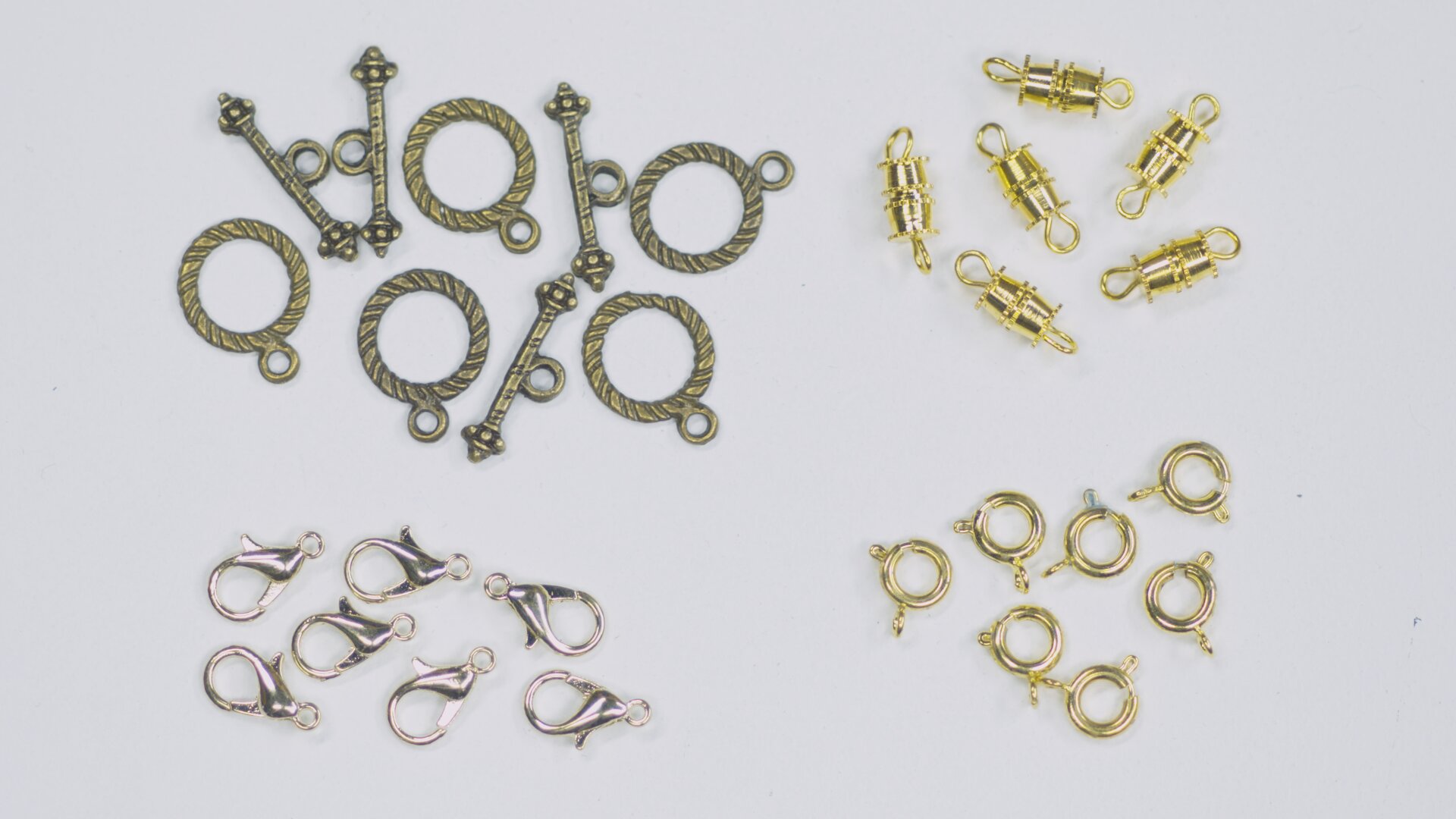
Accessories
Apart from beads and tools, there are a range of beading accessories that can make this craft easier and more fun.
Bead Board
Used for laying out and planning designs. Bead boards help with working out how big an item should be, as well as the length of stringing material and number of beads required to create it. It's indentations also keep beads from rolling away while you work.
Beading Needles
Some stringing materials such as thread and elastic cord require a needle to get through the centre of a bead. The eye of a beading needle is no wider than the needle itself so you can keep your stringing material as close to the size of the actual bead hole as possible.
Still looking for craft & hobbies inspiration?
Check out Spotlight's range of Craft & Hobbies available online, visit your local store or contact one of our experts for assistance.




